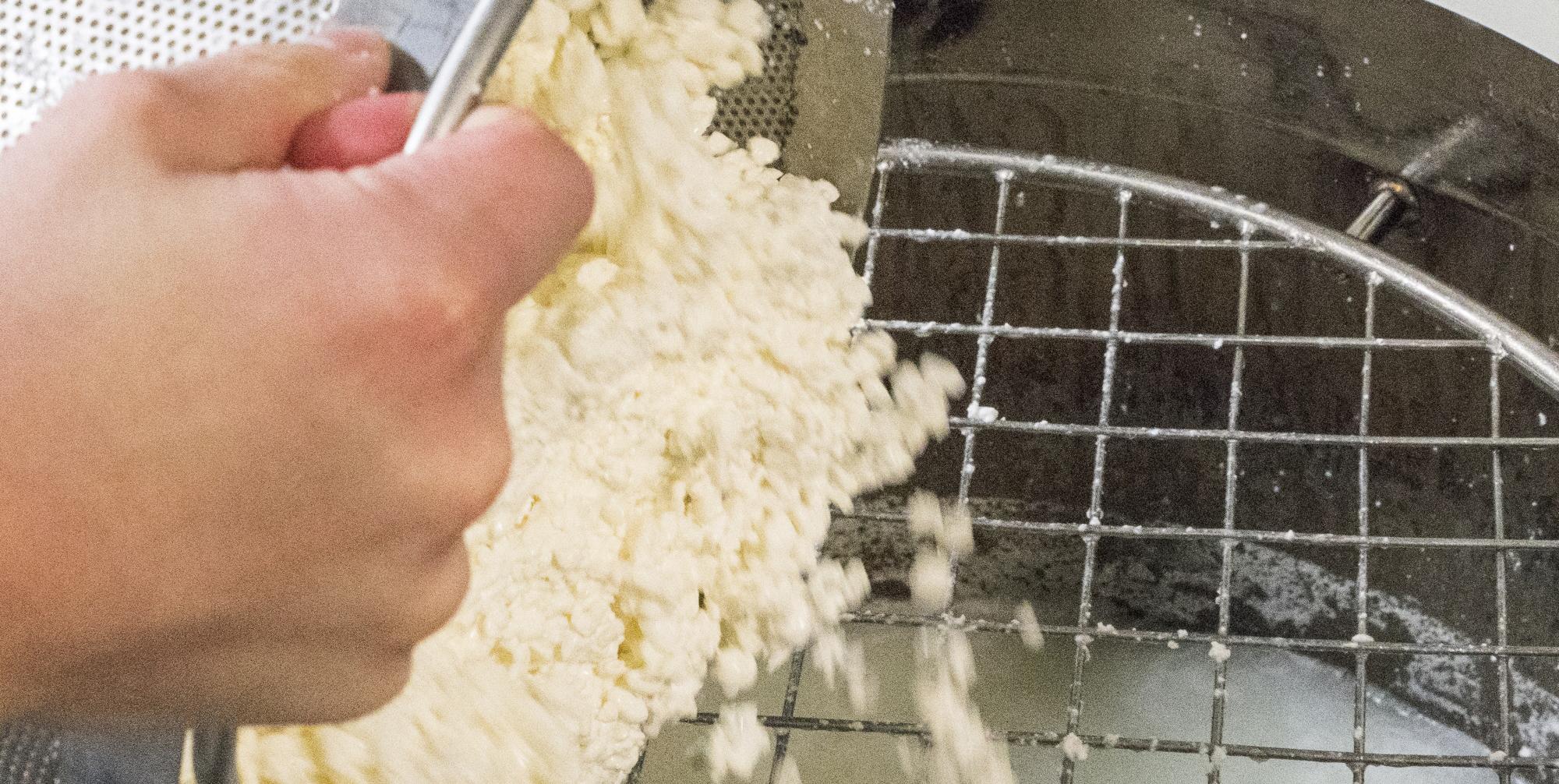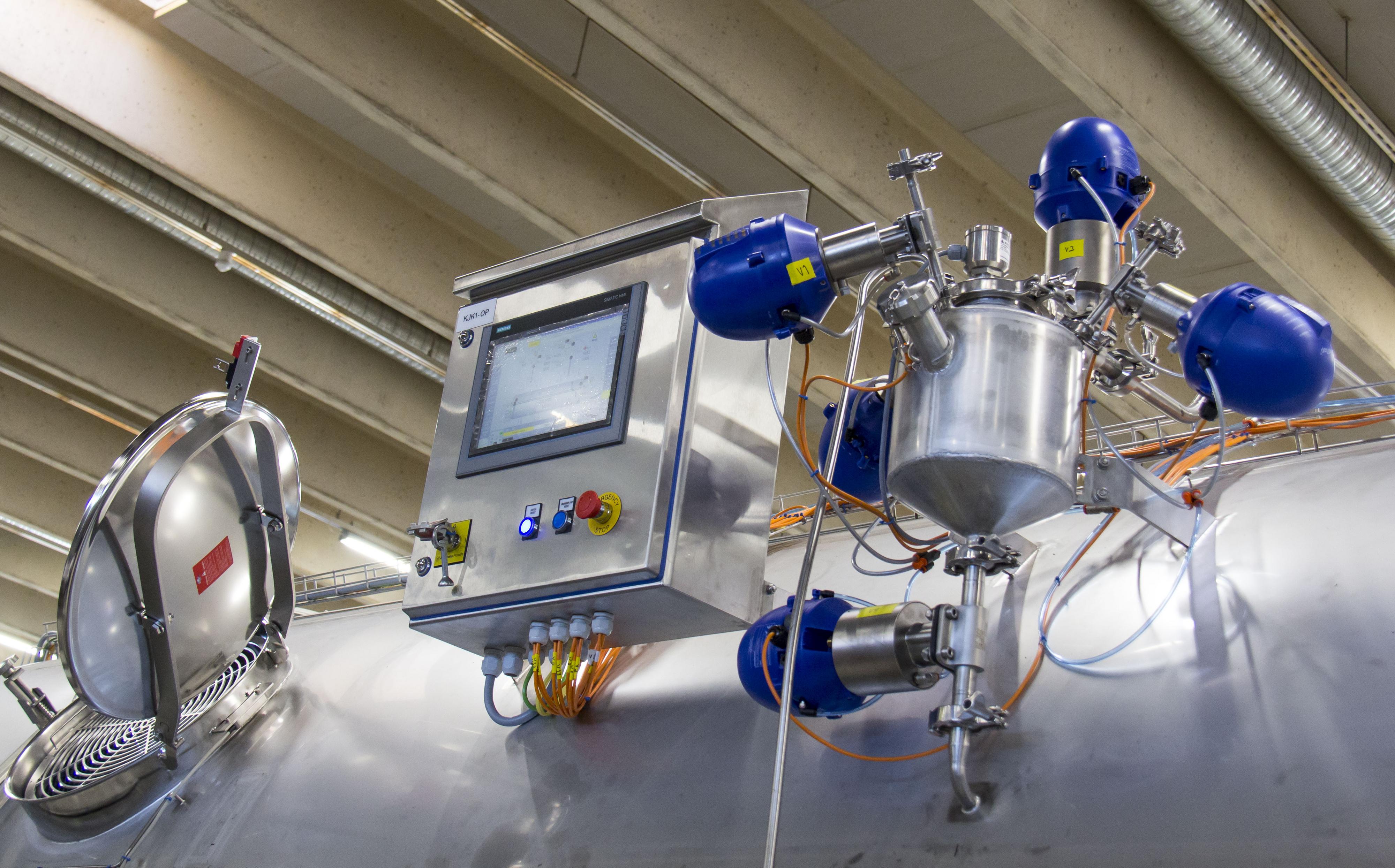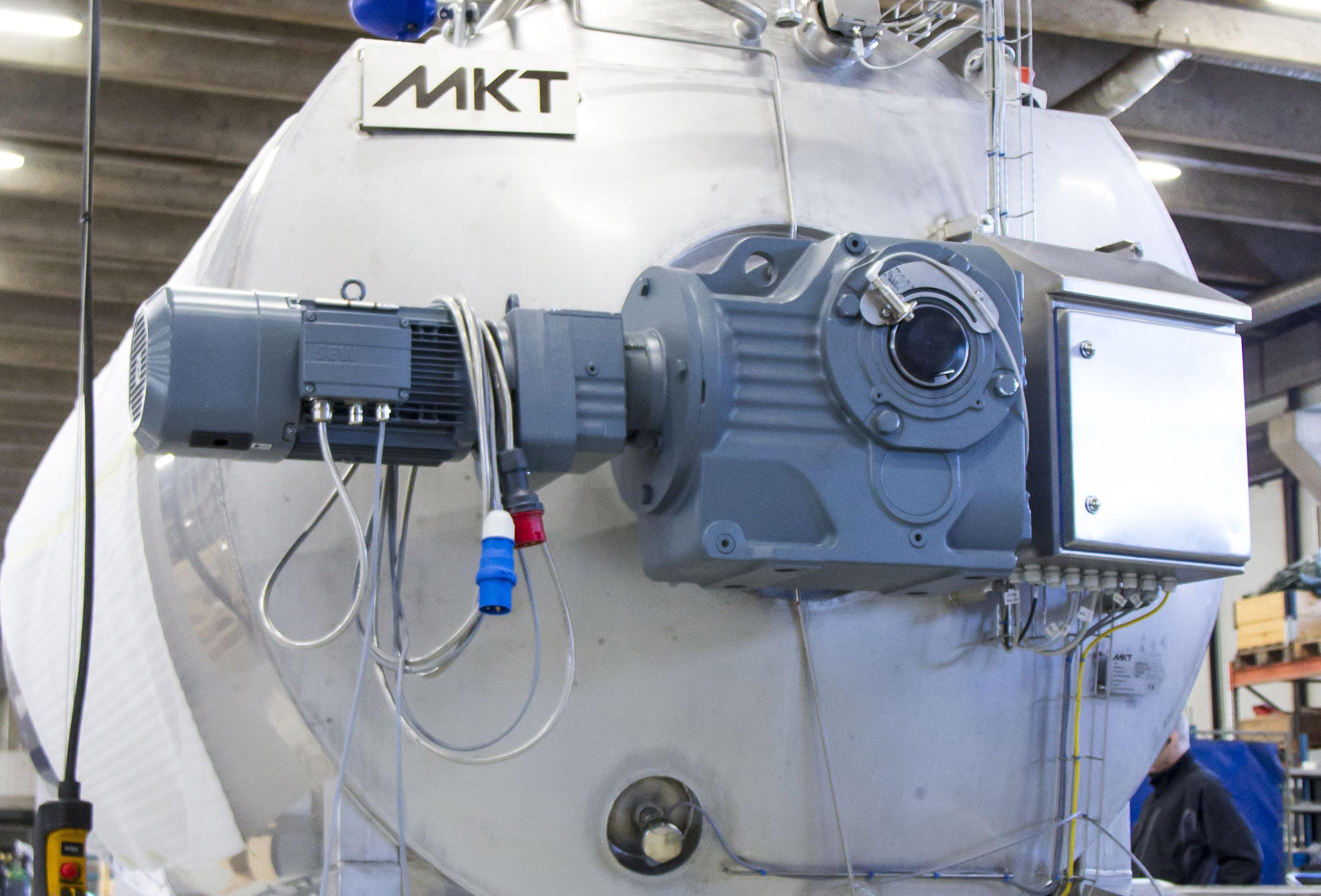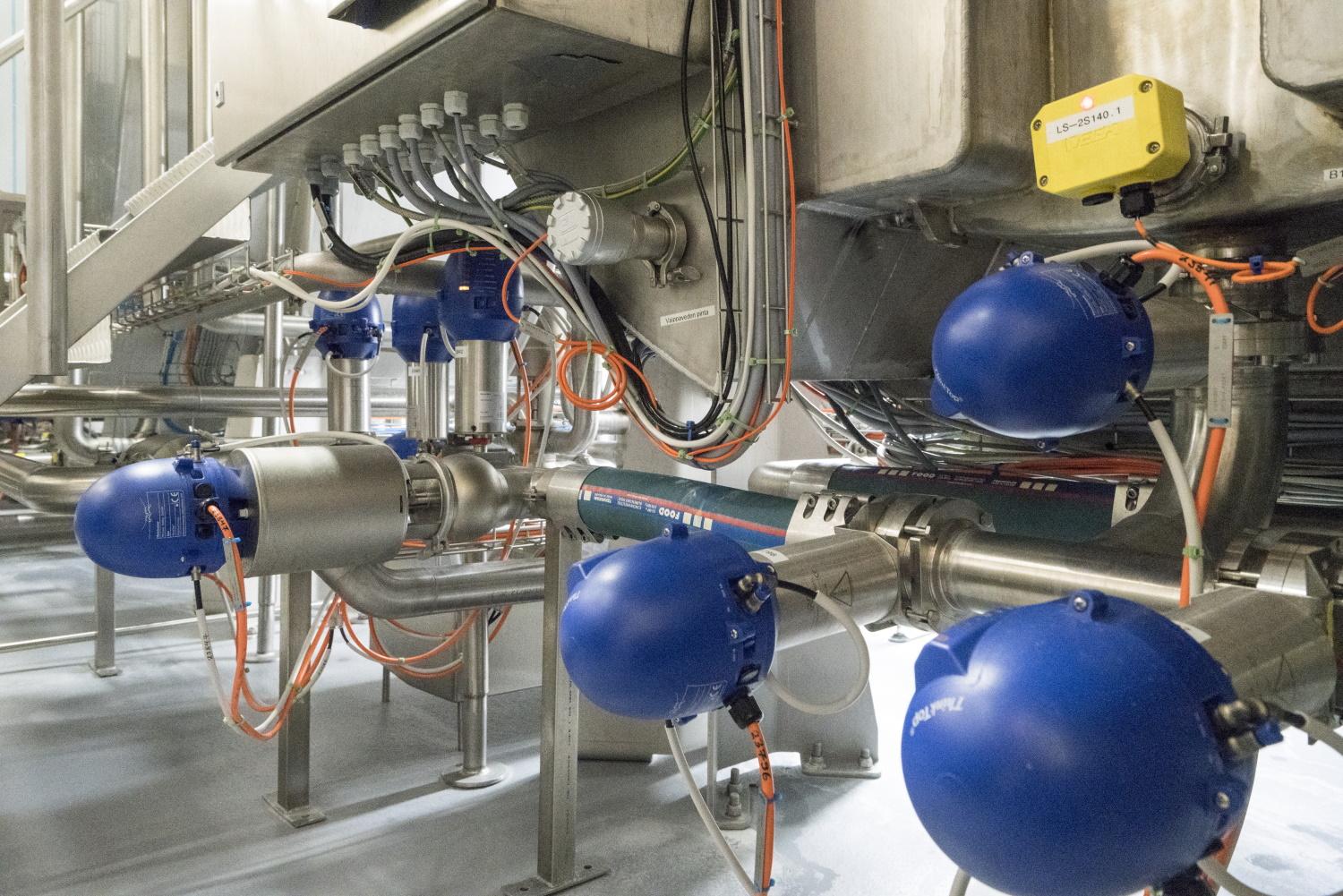Industrial cheesemaking is a process of continuous adaptation. Cheese is a living product, and making it is a form of art. To make real cheese of uniform quality requires constant adjustment, monitoring, and optimisation.

At MKT Dairy, we offer our clients equipment, maintenance, and other services that help you produce cheese of high and consistent quality. We provide tried-and-tested solutions that support your equipment throughout their lifecycle and enable efficient and hygienic production processes, with lower costs and higher amounts of quality produce.
In addition to traditional industrial cheesemaking equipment, our offering includes for example cloud-based services and data-driven process optimization.
- It Begins with Milk
- The Maximization of Yield and Cheese
- Optimizing Production and Quality
- Ensuring Effective Maintenance and Hygiene
Download our guide for cheesemakers »
1. It Begins with Milk
The profitability of cheese production crystallizes in the maximization of yield. The yield is particularly important, as the cost of cheese mostly depends on the raw material. You don’t want to waste any of your precious milk.
- As a ground rule, 10 litres of milk amount to one kilogram of cheese. As the amounts produced in an industrial facility are often in a range of millions of litres of milk and hundreds of thousands kilos of cheese, even a 3 percent increase in the yield means a huge increase in profits.
- Milk lots generally differ from each other, and when the souring agent is added to the milk, a vital process starts, the result of which is never exactly the same.
- An essential challenge in cheesemaking is getting a consistent product meeting the same quality criteria every time but with continuously changing raw materials. That is one of the things MKT Dairy can help you with.
Download our guide for profitable cheese production »
2. The Maximization of Yield and Cheese
It is not enough to produce the maximum quantity of cheese from milk, but to also maximize the overall amount of cheese that ends up on sale. The production process includes many stages in which the cheese already produced can be lost – unnecessarily. The process can also be significantly enhanced by right equipment selection.
2.1 Use the Whole Cheese Mass
- When the milk is coagulated in the vat as cheese mass, it is cut into cheese grains as uniform in size as possible.
- The cutter should extend to cut as much of the cheese as possible, because the uncut cheese cannot be utilized.
- The MKT cheese vat is round and straight, allowing a cutter so large that there are only a few millimetres between the cutter and the vat.
- The difference in the amount of wasted cheese in the cutting can be up to a hundred kilograms per vat between MKT and other models.
- This doesn’t only mean increasing your profits on the same amount of yield but also freeing up your production capacity.
2.2 Minimize the Amount of Cheese Fines
- The more accurate the cutter is, the fewer fines are also produced during the cutting process, and the better the yield.
- There is always production loss when the whey is separated from the cheese mass, when the whey is removed from the vat, and in the moulding process.
- The cheese fines consist of small particles that swim in the whey extracted from the cheese and are then discarded through the mould holes in the moulding process.
- MKT single-cut knife will produce a minimal amount of cheese fines compared to widely used wire cutters that cut several times.
2.3 Reduce Loss with Precise Moulding
- Once the cheese is ready, it is moved from the vat to the moulds.
- At this stage, many cheesemaking factories lose several kilos of cheese per vat due to the inaccuracy of the moulding station.
- With precision moulding, the finished cheese can be fully utilized.
- MKT moulding station fills the moulds with unparalleled precision and speed.
- No rejected moulds, no need to add a little extra to the products sold just to be on the safe side.
2.4 Make Production Match Demand with Data
- Modern cheese factories must be ready to respond to changes in demand and various seasonal trends.
- Adaptation requires new types of equipment and data collected from the market instead of a traditional product line for mass-market products.
- Data gathered from sales helps you find out for example changes in demand and effects of discounts to optimize production and to react quickly to markets.
- Data is a critical resource for making cheese, and the cloud is the best way to organize the collection and processing of data.
- MKT helps fromagers in utilizing cloud-based data gathering and decision-making.
» Download MKT Multi-purpose Cheese Vat tech sheet

3. Optimizing Production and Quality
When production is halted due to equipment maintenance or product development batch maintenance, profitability suffers. Another factor is extraneous labour costs relative to the volume of cheese produced. However, these costs can also be reduced by making sensible equipment selections and reorganizing the production in a new way.
3.1 Increase Efficiency Through Automation
- Automation improves production efficiency and the homogeneity of end products.
- MKT Automatic Cheese Vat will handle the entire manufacturing process without any further guidance, from filling the vat to thoroughly washing it.
- With automation, cheese production is always running at the maximum and optimal level of performance, making the best use of the production equipment at all times.
- With full automation, there are no employees in the production facilities, and process information, including alerts, are conveyed remotely through mobile data or other means.
- Cloud-based data enables operations to repeat at precisely the right time and setting controls and values for the raw material batch, with your factory always running at maximum.
3.2 Avoid Unnecessary Halts in Production
- Connect your production to our cloud-based service to continuously monitor equipment utilization, power supply, and other data.
- Cloud data can be used to estimate maintenance needs and to see upcoming malfunctions in advance.
- Minimize equipment breakdowns and unnecessary downtime, and run your factory in an agile and adaptive manner.
- MKT offers fromagers high-quality automatic cheese vats, cloud-based applications with sufficient storage capacity, and necessary integrations.
3.3 Make Your Product Development More Cost-effective
- Consumers demand new kinds of flavor experiences and constant variety in cheeses.
- The pressure to conduct continuous experimentation and product development sets a challenge for the equipment and technology used in cheesemaking.
- Large-scale traditional product lines cannot easily be used to produce single production batches and quick experiments, for efficiency reasons also.
- Testing and experimenting can be quickly and cost-effectively carried out with flexible and adaptable MKT 50-litre pilot vat.
3.4 Optimize Process Time and Production Capacity
- The faster you can produce a batch of cheese, the more cheese you can produce, and the more profitable your cheese factory is – it really is quite simple.
- The process time can be shortened in many different stages, for example in milk processing, vat filling, cutting, mixing, moulding, and washing.
- As the process time is reduced, the costs do not increase, but you can optimize your capacity and produce more cheese with the same amount of labour costs.
- When optimizing the process time, it is important to remember that the quality of various kinds of cheeses depends primarily on the acidification process, and accelerating it can be challenging and even risky.
3.5 Improve Cheese Quality and Your Bottom Line
- The market price of your cheese defines the overall profitability of your cheese production operation.
- The higher the quality and, above all, the more homogeneous the cheese is, the better the chances are for you to increase your price and operating margins.
- Choosing the right equipment is an important part of high-quality cheese production.
- A high-quality cheese vat is the most important piece of equipment, and it must be easy to wash and durable, among other things.
- Furthermore, cutting, heating, mixing, and moulding are all stages of production where the right equipment options can be used to ensure the high quality of the cheese produced.
Download our guide for reliable cheese production »
4. Ensuring Effective Maintenance and Hygiene
No matter how high quality the equipment is or how accurately malfunctions are predicted, cheese factories always need maintenance and upkeep. In addition, the hygiene of the process must be up to the highest possible standards.
4.1 Smooth Maintenance Brings Reliability
- Functional and smooth maintenance is necessary for production reliability.
- Spare parts must be available quickly, and repair and maintenance personnel should have adequate expertise in installing them.
- Maintenance operations should be carried out in a planned fashion, and maintenance breaks timed at moments most suitable for production.
4.2 Familiar Components for Quicker Service
- Large cheese factories in particular are constantly developing their own maintenance and upkeep.
- Usually, cheese factory maintenance staff have expertise specifically related to components of a particular manufacturer.
- Similarly, some countries or regions may only have maintenance available for a specific brand.
- When obtaining equipment, you should make sure that there is know-how on the maintenance of their components, ensuring quick and reliable operations.
- MKT supplies all equipment flexibly with the precise main components chosen by the customer.
4.3 Appropriate Documentation Guarantees Spare Part Availability
- It is possible that some spare parts needed for your equipment are no longer available, potentially leading to a halt in production.
- Manufacturing of a part may have been discontinued and the related blueprints lost – if they even existed in the first place.
- You should always confirm with a spare part manufacturer that all blueprints have been carefully documented and that the documentation is stored appropriately.
- Cheese vats and other equipment made by MKT have been carefully documented and blueprints stored in a cloud, securing successful spare part manufacturing even decades later.
4.4 Hygiene Standards Are Met with Excellent Washability
- To ensure a smooth production process, when one vat lot of cheese is completed, the next lot must be started as soon as possible.
- In between, the vat will need to be fully cleaned, and only the best result is acceptable concerning hygiene.
- The result of the wash should leave absolutely no spot for bacteria or viruses, such as phages.
- A cheese lot contaminated by a virus is completely unusable, so the cleanliness of the vat is one of the absolute prerequisites of sustainable cheesemaking.
- Automation improves the washability of the equipment – an electronic vat cleans itself using the washing balls placed inside the vat.
- High-quality automatic wash guarantees a consistent, uniformly clean end result.
Download our brochure on equipment quality »
Please get in touch with us to find out more on our solutions for modern industrial cheese production!
Contact Us
If you are interested in MKT quality industrial cheesemaking equipment, please get in touch with us to find out more!


